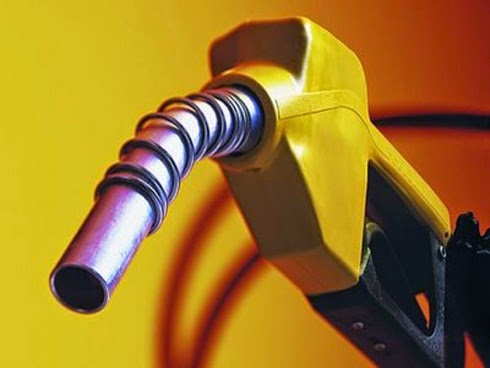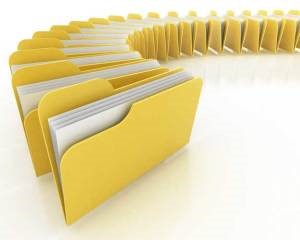Information
-
Name of Dealer
-
Brand
- Petronas
- Shell
- Petron
- BHP
- Caltex
- Others
-
Address
-
KPDNKK seiral No:
-
Ownership
-
number of dispenser
-
Person In charge
-
Tel No: / Fax No: / Email:
-
Date Start operation
-
No. of employees :
-
No. of employees : Citizen male =
-
No. of employees : Citizen Female
-
No. of employees : Foreigners male
-
No. of employees : Foreigners female
Part B : Unloading From Tanker
Zone : Safe operating Procedure /Safe Work Procedure
-
Measure to control spill and leaks during tranfers
-
Measure to control static electricity during transfer 1.e: earthing
-
measure to control source of ignition during transfer
-
vapour recovery system is applied
-
Document on safe transfer or unload of fuel
-
Trained operator
Part C : Underground Storage Tank
Zone 1. Riser (filling Point)
-
Riser are in good condition
-
Fuel Type identification (color coding/tagging)
-
Secured/locked
Zone 2 Tank Venting Equipment
-
Pressure/vacuum vent Cap Present (if required )<br> a. type of venting<br>b. available<br>c. functioning
-
remark :
Zone 3. Sump : containment and fittings
-
Sump/manhole cover in good condition (create proper sealed and no crack)
-
sump seal in good condition (no crack or loose seals)
-
Clean, empty and dry - no water product, dirty, debris.
-
Sump Intergrity (free of crack, bulges, holes)
-
Connector/fitting : free of leaks
-
Appearance of piping (free of rust, discoloration, delamination, swelling, disintegration, etc)
Zone 4. Overfill protection Devices
-
avaiable
-
Functioning properly
-
overfill alarm
Zone 5. Cathodic protection (if required)
-
Rectifier operation within normal limits
-
Proper operation verified by qualified person
Zone 6. Dipstick
-
type :
-
dipstick are protect by teflon to avoid spark
Zone 7. Automatic tank Gauge (ATG
-
available
-
ATG equipment functional
Zone 8 Leak detactor e.g. vacuum gauge
-
Any leak detector installed
-
Type
-
functioning properly
-
tested
Zone 9. Groundwater monitoring tube/ monitoring well
-
record on usage avaiable
Zone 10 Signage
-
Available and noticeable
Part d : Despensing Area
Zone 1 : Dispenser/pump anchoring and ground to earth
-
Type : Pressure / suction
-
Bolt are well tihgtened
-
Free from corrosion damage
-
Ground test for "hanging hardware" is regularly done
Zone 2 : Dispenser sump containment
-
Clean, empty and dry- no water, product, oil, debris
-
Sump integrity (free from crack, bulges, holes)
Zone 3: Shear valve on pressurized product lines
-
One shear valve for each fuel line.
-
Properly secured an anchored
-
Installed at proper level. Check at construction level? (need to refer std)
-
Free from leaks
Zone 4: Emergency stop button
-
Available at each dispenser and located on conspicuous position
-
Clearly labeled. i.e. "EMERGENCY STOP"
-
Routinely tested.(at least yearly)
Zone 5: Hanging Hardware (Hosepipes / breakaway / nozzles)
-
Free from cracks, cuts, fractures, leakage, and movement between hose and fittings.
-
Nozzle sensor functioning properly
-
Nozzles splash guard available
-
Valid breakaway (expired dated)
-
Labelling of product
Zone 6 : Signage
-
Standard warning symbols. i.e. "STOP ENGINE", NO SMOKING" are displayed at or adjacent to the filling area
-
Labelling of product
-
available and noticeable
-
Dispensing instruction is stated clearly
-
Reminder e.g. Do not leave pump unattended to ensure spillage or overfilling are prevented during the filling stated at dispenser
Zone 7 : Bollards
-
Bollards are in place to protect against the vehicle impact
Zone 8 : Oil floor Trap
-
Available at each dispenser and flow is not interrupted to oil interceptor
Zone 9: Oil interceptor
-
Available and flow from oil flor trap is not interrupted
Part E : NGV Dispensing NA.
Part F : Emergency Response Plan
Element 1 : OSHMS
-
Employees are trained in the use of emergency equiment
-
Employees are trainer emergency procedure and the use of machine equipment
-
Emergency procedures are available for fire, spillage, accident, equipment failure and other potential abnormalities or emergencies (underground storage tank, oil dispensing or NGV dispensing area)
-
Emergency plan is regularly tested, reviewed and updated as required
-
List of emergency telephone numbers, including BOMBA, Ambulance service and other emergency responders is prominently displayed near the control center (console) telephone
-
spill kit is complete and readily avaiable
-
An incident investigation procedure is avaiable and employees are trained
Element 2 : Main Emergency Stop Button
-
Available to shut off power to all dispensing unit
-
Readily accessible in an emergency . (e.g. there is clear access to the emergency stop with no obstructions such rack, shelves or spill kits)
-
Clearly labeled i.e. "Emergency Stop"
-
Routinely test ( at least monthly)
Element 3 : Fire Protection System
-
Trained operator how to use fire protection system
-
Adequately installed, tested and maintained
-
Fire extinguisher is not expired
-
Fire extinguisher is located in a conspicuous position near dispenser or other item being protected
-
Fire extinguisher is located in a conspicuous position without undue danger in an emergency
-
Each fire extinguisher location is marked by a Fire Extinguisher sign
Part G : Other
Zone 1 : Domcumentation and records
-
Risk assessment is available and maintained i.e. HIRARC, HEMP, HAZOP, etc
-
Safety data sheet (SDS) are readily located in conspicuous position an maintained.
-
safety policy has been established (if required)
-
Organization Chart was created
-
Whenever discrepancies in the records indicate possible leakage, the dangerous goods installation is checked and any leaks rectified.
-
Distribution PPE records are maintained
-
Training records maintained
-
Inspection an maintenance records are maintained
-
Have audit been carried out by oil company
Zone 2 : Floor & Wall openings
-
Are floor holes or openings guarded by a cover, guardrail or equivalent on all sides? (except at entrance to stairways or ladders)
-
Are unused portions of service pits and pits not actually in use either covered or protected by guardrails or equivalent
Part h : Workshop/ Car Wash / Mini market / Restaurant / Surau / Toilet
Zone 1 : Workshop/ Car Wash / Mini market / Restaurant / Surau / Toilet
-
All certificated machineries are registered with dosh. i.e. air compressor units
-
Free from open flame / welding
-
Suitable PPE
-
Proper housekeeping
-
Acceptable signage
-
safe operating procedure i.e. service, repair, etc
Ulasan
-
Ulasan Pegawai
-
Tarikh :
-
Tandatangan
-
Ulasan Ketua .
-
Tarikh :
-
Tandatangan & cop







